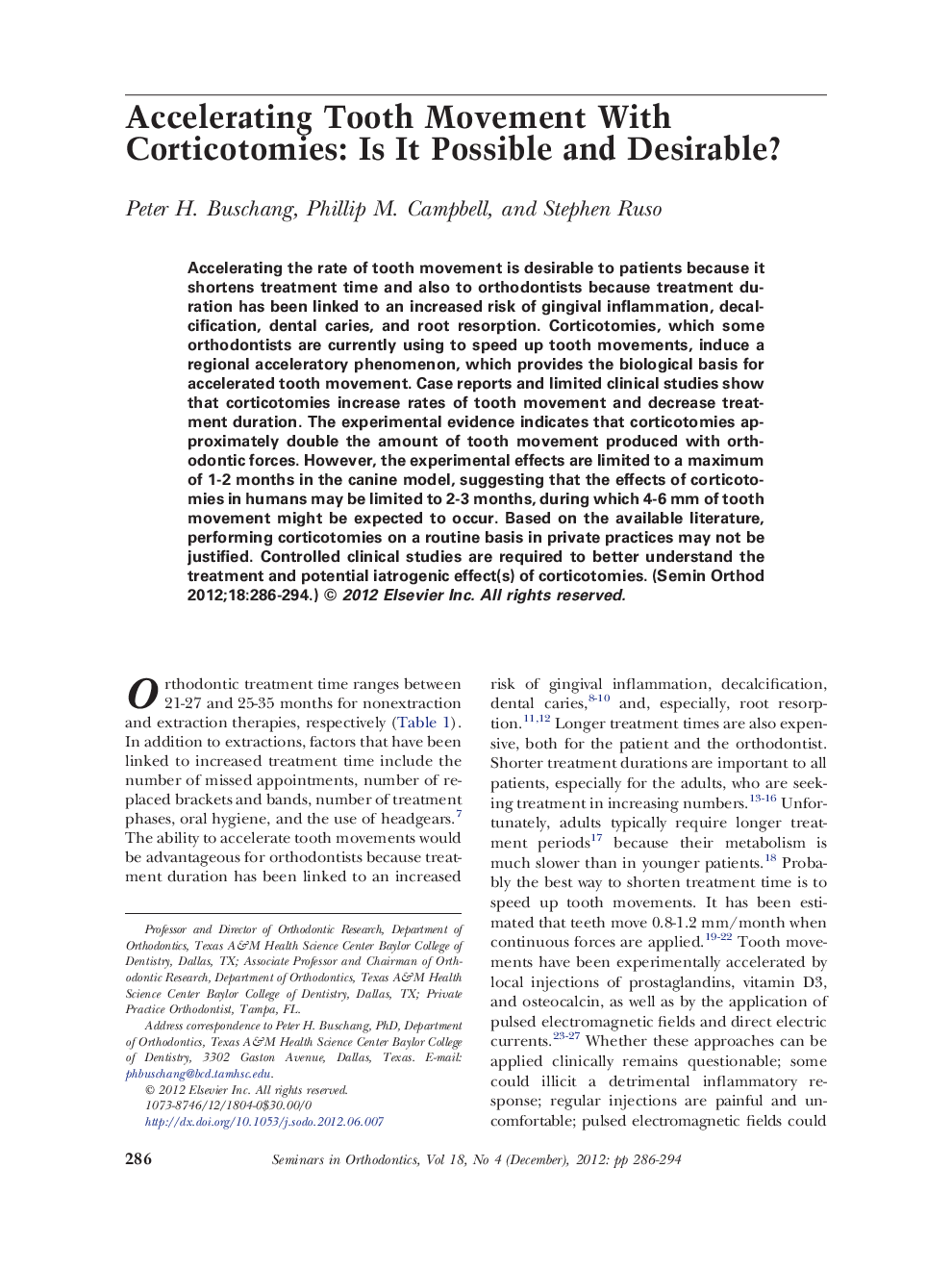| Article ID | Journal | Published Year | Pages | File Type |
|---|---|---|---|---|
| 3175479 | Seminars in Orthodontics | 2012 | 9 Pages |
Accelerating the rate of tooth movement is desirable to patients because it shortens treatment time and also to orthodontists because treatment duration has been linked to an increased risk of gingival inflammation, decalcification, dental caries, and root resorption. Corticotomies, which some orthodontists are currently using to speed up tooth movements, induce a regional acceleratory phenomenon, which provides the biological basis for accelerated tooth movement. Case reports and limited clinical studies show that corticotomies increase rates of tooth movement and decrease treatment duration. The experimental evidence indicates that corticotomies approximately double the amount of tooth movement produced with orthodontic forces. However, the experimental effects are limited to a maximum of 1-2 months in the canine model, suggesting that the effects of corticotomies in humans may be limited to 2-3 months, during which 4-6 mm of tooth movement might be expected to occur. Based on the available literature, performing corticotomies on a routine basis in private practices may not be justified. Controlled clinical studies are required to better understand the treatment and potential iatrogenic effect(s) of corticotomies.
